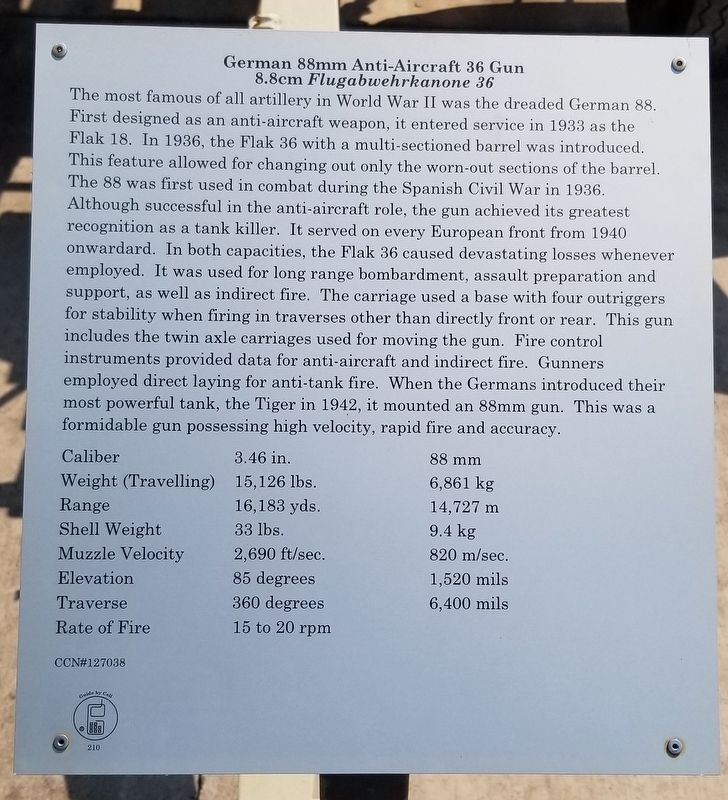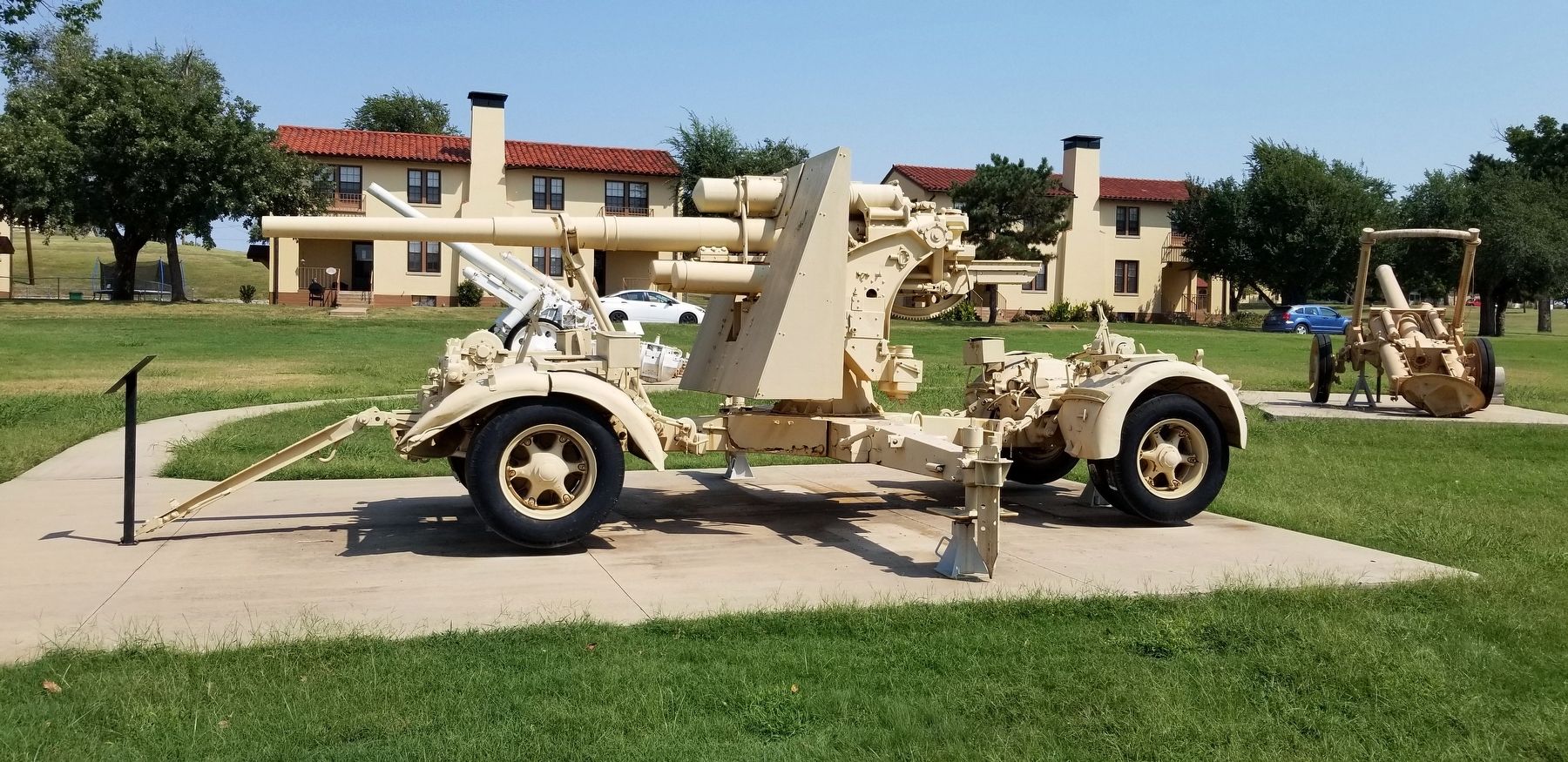Fort Sill in Comanche County, Oklahoma — The American South (West South Central)
German 88mm Anti-Aircraft 36 Gun
8.8cm Flugabwehrkanone 36
The most famous of all artillery in World War II was the dreaded German 88. First designed as an anti-aircraft weapon, it entered service in 1933 as the Flak 18. In 1936, the Flak 36 with a multi-sectioned barrel was introduced. This feature allowed for changing out only the worn-out sections of the barrel. The 88 was first used in combat during the Spanish Civil War in 1936. Although successful in the anti-aircraft role, the gun achieved its greatest recognition as a tank killer. It served on every European front from 1940 onwardard (sic). In both capacities, the Flak 36 caused devastating losses whenever employed. It was used for long range bombardment, assault preparation and support, as well as indirect fire. The carriage used a base with four outriggers for stability when firing in traverses other than directly front or rear. This gun includes the twin axle carriages used for moving the gun. Fire control instruments provided data for anti-aircraft and indirect fire. Gunners employed direct laying for anti-tank fire. When the Germans introduced their most powerful tank, the Tiger in 1942, it mounted an 88mm gun. This was a formidable gun possessing high velocity, rapid fire and accuracy.
Caliber - 3.46 in. - 88 mm
Weight (Travelling) - 15,126 lbs. - 6,861 kg
Range - 16,183 yds. - 14,727 m
Shell Weight - 33 lbs. - 9.4 kg
Muzzle Velocity - 2,690 ft/sec. - 820 m/sec.
Elevation - 85 degrees - 1,520 mils
Traverse - 360 degrees - 6,400 mils
Rate of Fire - 15 to 20 rpm
CCN#127038
Erected by U.S. Army Field Artillery Museum. (Marker Number 210.)
Topics. This historical marker is listed in this topic list: War, World II. A significant historical year for this entry is 1933.
Location. 34° 40.001′ N, 98° 23.09′ W. Marker is in Fort Sill, Oklahoma, in Comanche County. Marker is at the intersection of Corral Road and Randolph Road, on the right when traveling west on Corral Road. The marker is located in the eastern section of Artillery Park at the U.S. Army Field Artillery Museum. Touch for map. Marker is in this post office area: Fort Sill OK 73503, United States of America. Touch for directions.
Other nearby markers. At least 8 other markers are within walking distance of this marker. German 150mm Heavy Howitzer (a few steps from this marker); U.S. 8-Inch Howitzer, M1/M115 (a few steps from this marker); U.S. M43 8-inch Howitzer Motor Carriage (a few steps from this marker); German GrW 69 210mm Heavy Mortar (a few steps from this marker); German K-18 170mm Gun (a few steps from this marker); German 56 150 and 300mm Rocket Launcher (within shouting distance of this marker); Austro-Hungarian 75mm Mountain Cannon Model 15 (within shouting distance of this marker); German Heavy 10cm K-18 Cannon (within shouting distance of this marker). Touch for a list and map of all markers in Fort Sill.
More about this marker. Marker and Museum are located on Fort Sill, an active U.S. military installation. The museum is open to the public, but appropriate identification is required for access for Fort Sill.
Also see . . . U.S. Army Field Artillery Museum. Museum website entry (Submitted on March 9, 2022, by James Hulse of Medina, Texas.)
Credits. This page was last revised on April 29, 2022. It was originally submitted on March 9, 2022, by James Hulse of Medina, Texas. This page has been viewed 139 times since then and 22 times this year. Photos: 1, 2. submitted on March 9, 2022, by James Hulse of Medina, Texas.

